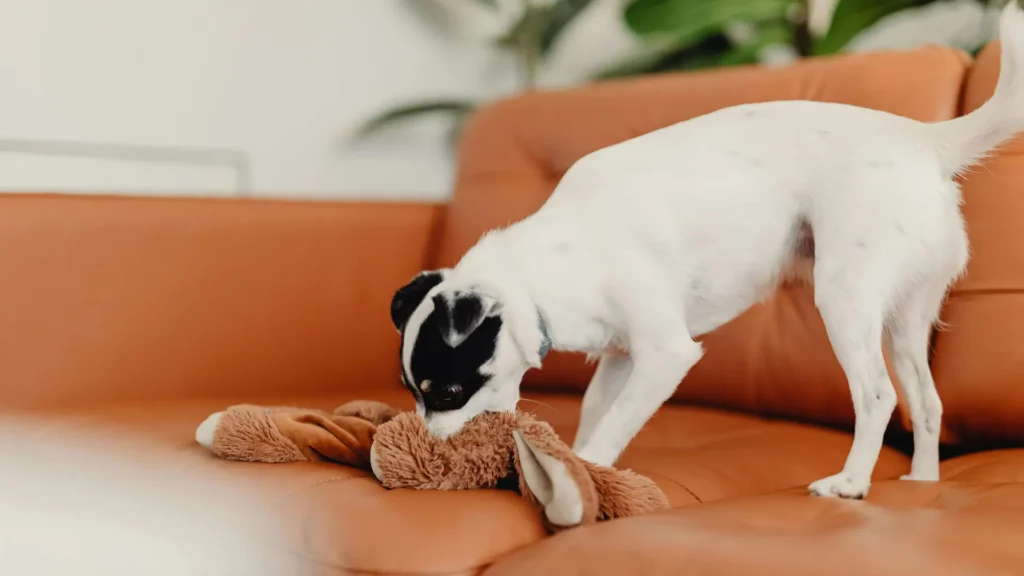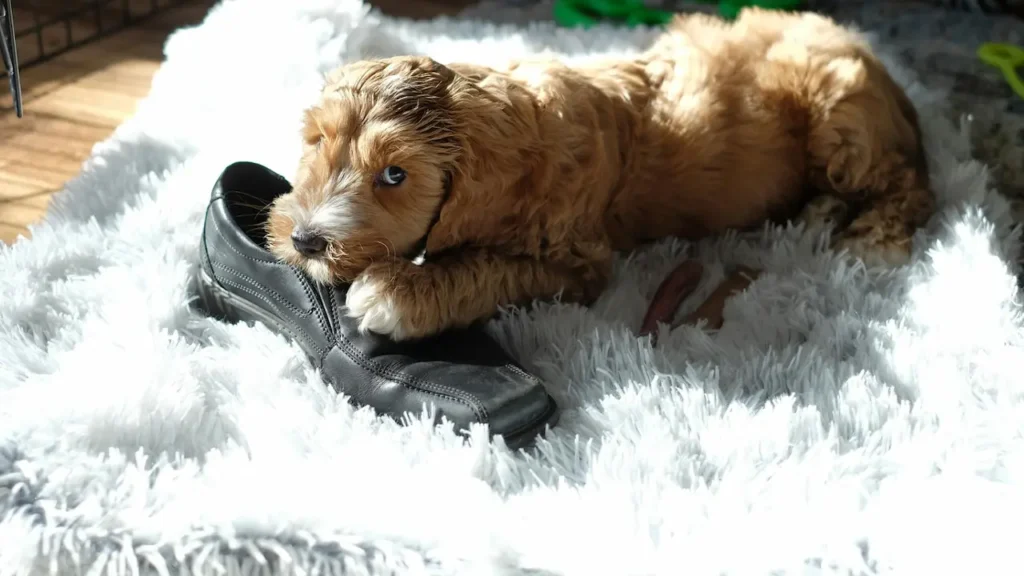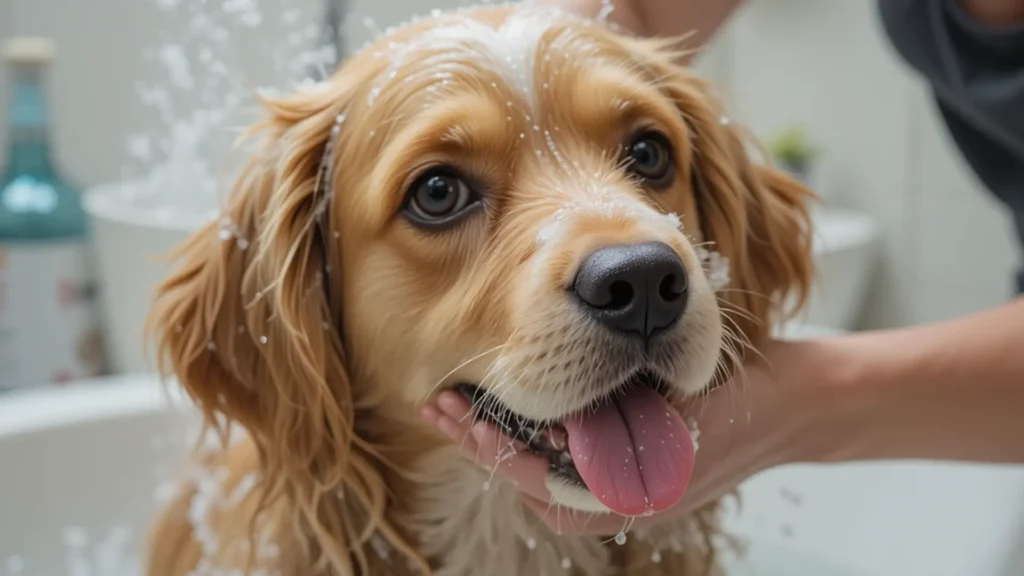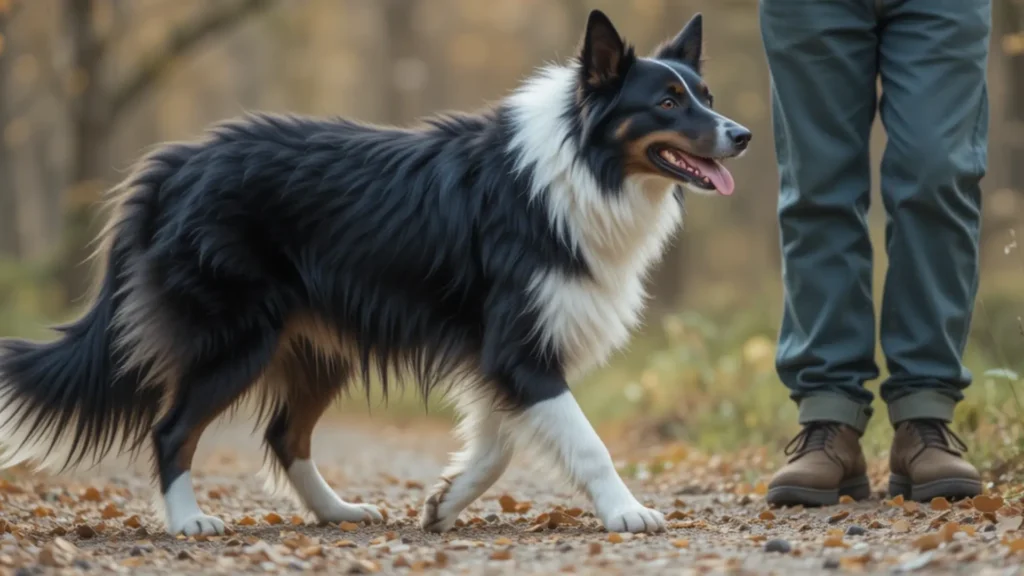Dog chews. It is normal. But excessive chewing is destructive. If you’ve ever wondered, “Why does my dog chew everything?”—you’re not alone. Let’s dive into the reasons behind this behavior and how to address it effectively.
Teething and Puppy Development
Puppies go through a significant developmental phase during their first six months of life. One of the most noticeable milestones is teething. Between the ages of 3 and 6 months, puppies lose their baby teeth and grow their permanent adult teeth.
This process causes discomfort, irritation, and pain in their gums. To alleviate this discomfort, puppies instinctively chew on objects to massage their sore gums and help loosen their baby teeth.
During this period, it’s crucial for pet parents to provide appropriate outlets for chewing.
Guiding puppies is important. Otherwise, it may turn to household items like shoes, furniture legs, and electrical cords. This damages property and poses serious health risks.
Invest in high-quality chew toys specifically designed for teething puppies. These toys are softer than those intended for adult dogs and are made from materials that soothe irritated gums.
Always supervise your puppy during playtime to ensure they’re using the right items and aren’t accidentally harming themselves.
Boredom and Lack of Mental Stimulation
Dogs have innate desire to stay active and mentally stimulated. In the wild, their ancestors spent hours hunting, scavenging, and interacting with their pack members. Modern domesticated dogs no longer need to fend for themselves, but they still require ample opportunities to burn off energy and engage their minds. When these needs aren’t met, boredom sets in, leading to undesirable behaviors such as excessive chewing.
High-energy breeds like Border Collies, Australian Shepherds, and Siberian Huskies are especially prone to developing destructive chewing habits. Without adequate stimulation, these dogs may channel their pent-up energy into chewing furniture, rugs, and other inappropriate objects.
To combat boredom-induced chewing, incorporate a mix of physical activity and mental enrichment into your dog’s daily routine. Take your dog for regular walks, runs, or hikes. Engage them in fetch, frisbee, or tug-of-war to tire them out physically.
Puzzle toys, treat-dispensing balls, and interactive feeders can challenge your dog’s problem-solving skills while keeping them entertained. For example, Kong toys stuffed with peanut butter or kibble can keep your dog occupied for extended periods.
Short, consistent training sessions teach obedience and stimulate your dog’s brain. Teach new tricks or practice commands like “sit,” “stay,” or “leave it” to redirect their focus away from chewing inappropriate items.
Arrange playdates with other friendly dogs or visit dog parks to give your pup a chance to socialize and expend energy.
Anxiety and Stress
Dogs experience anxiety and stress. Chewing serves as a coping mechanism. When faced with stressful situations, dogs may resort to chewing as a way to self-soothe. This behavior releases endorphins, which act as natural mood boosters and help calm anxious feelings.
Separation anxiety is one of the most common causes of stress-related chewing. Dogs with separation anxiety become distressed when their owners leave. This results in destructive behavior like chewing doors, windowsills, or bedding.
Thunderstorms, fireworks, moving to a new home, or introducing a new family member helps to increase chewing.
To manage anxiety-driven chewing, start by identifying and minimizing potential stressors in your dog’s life. Gradual desensitization techniques can be highly effective for dogs with separation anxiety.
Begin by leaving your dog alone for just a few minutes and gradually increase the duration over time. Pair your departures with positive experiences, such as leaving treats behind.
Provide a secure area where your dog feels safe when you’re not home. A crate with familiar scents and comforting items can help ease their anxiety.
Consider using calming products like pheromone diffusers, anxiety wraps, and natural supplements containing ingredients like chamomile. However, consult your veterinarian before introducing any new supplements or medications.
Exploring Their Environment

Chewing plays a vital role in how dogs explore and interact with their surroundings. Dogs use their mouths to gather information about textures, tastes, and scents. From a young age, puppies learn about the world by mouthing objects. This exploratory behavior continues into adulthood.
Unfortunately, this natural curiosity can lead to trouble when dogs chew on items they shouldn’t. Shoes, remote controls, socks, and walls can fall victim to a curious dog’s teeth. While this behavior isn’t inherently malicious, it can result in costly damage and safety hazards if left unchecked.
To satisfy your dog’s urge to explore without risking harm, take proactive steps to dog-proof your home. Store clothing, electronics, and small objects out of reach. Use baby gates to limit access to hazardous areas.
At the same time, provide plenty of safe alternatives to fulfill their chewing needs. Durable rubber toys, nylon bones, and antlers are excellent options for heavy chewers.
Rotate these toys regularly to maintain your dog’s interest and make sure they remain appealing. Additionally, praise your dog whenever they choose an appropriate toy over a forbidden item to reinforce good decision-making.
Nutritional Deficiencies
Some chewing stem from nutritional deficiencies. A dog that chews rocks, dirt, fabric, metal, may be exhibiting a condition known as pica. Pica is characterized by an appetite for substances that have no nutritional value and is often linked to underlying health issues, including malnutrition, mineral imbalances, or gastrointestinal problems.
While pica isn’t always caused by poor nutrition, it’s important to rule out dietary deficiencies as a contributing factor.
If your dog’s chewing seems compulsive, schedule an appointment with your veterinarian. Based on the findings, your vet may recommend dietary adjustments. Switching to a higher-quality dog food that provides balanced nutrition tailored to your dog’s age, size, and activity level.
Add vitamins, minerals, and omega fatty acids to your dog’s diet to address specific deficiencies. If pica is related to a health issue such as diabetes, thyroid dysfunction, or intestinal parasites, your vet will provide appropriate treatment plans.
It’s also worth noting that some dogs develop pica-like behaviors out of boredom rather than nutritional needs. Therefore, addressing both physical and emotional factors is key to managing this type of chewing effectively.
Instinctual Behavior
Chewing is a deeply rooted instinct that traces back to dogs’ wild ancestors. In nature, wolves and other canines relied on chewing bones to extract marrow, clean their teeth, and maintain strong jaw muscles. These activities were essential for survival. These helped them process raw meat and tough hides while keeping their dental health intact.
The instinct to chew remains hardwired into the DNA of domesticated dogs. For many dogs, chewing serves multiple purposes beyond satisfying hunger. It helps relieve stress, strengthens jaw muscles, and keeps their teeth clean by reducing plaque buildup. Without proper outlets for this natural behavior, dogs may resort to chewing inappropriate objects around the house.
Rather than trying to eliminate chewing altogether, embrace it as a healthy and normal part of your dog’s life. The key is to channel this instinct into safe and constructive activities.
Invest in durable, high-quality chew toys designed specifically for dogs. Look for options made from rubber, nylon, and rope. They are built to withstand heavy chewing without breaking apart into hazardous pieces.
Offer your dog edible chews such as bully sticks, antlers, and dental treats. These not only satisfy your dog’s urge to chew but also promote good oral hygiene by scraping away tartar and plaque.
Never give your dog cooked bones, especially chicken or pork bones. They can splinter and cause serious injuries like choking, broken teeth, and internal damage. Raw bones from reputable sources can be safer but should still be supervised closely.
Keep your dog interested by rotating their chew toys regularly. This prevents boredom and ensures they remain engaged with the items you’ve provided.
Attention-Seeking Behavior
Some dogs quickly learn that chewing gets them noticed. Reaction from their owner reinforces the behavior. For example, a bored dog left alone in the living room might start gnawing on the couch cushion simply to provoke a response. Once you rush over to stop them, they’ve achieved their goal: getting your attention.
This dynamic can create a frustrating cycle where the more you react, the more your dog continues to chew on forbidden items. Even scolding can inadvertently reward the behavior. Because dogs interpret verbal corrections as forms of engagement.
To break this pattern, shift your focus toward reinforcing positive behaviors instead of punishing undesirable ones.
When your dog chews on something inappropriate, avoid reacting emotionally. Instead, calmly redirect them to an acceptable chew toy without making eye contact. Over time, they’ll learn that chewing on approved items earns more favorable responses.
Whenever your dog chews on their designated toys and ignores tempting household objects, shower them with praise. Positive reinforcement teaches them that chewing the right things leads to rewards.
Make it harder for your dog to reach off-limits items by storing shoes, remotes, and other enticing objects out of sight. Use baby gates to limit access to certain areas.
Finally, ensure your dog receives enough one-on-one time throughout the day. Many attention-seeking behaviors arise from loneliness. By dedicating quality time to play, walks, and cuddles, you can reduce their reliance on destructive chewing as a way to gain your focus.
By identifying the underlying reasons behind your dog’s chewing habit, you can take steps to redirect their behavior constructively. Remember, a happy dog is one whose needs are met, and addressing chewing early on will strengthen the bond between you and your loyal companion.




